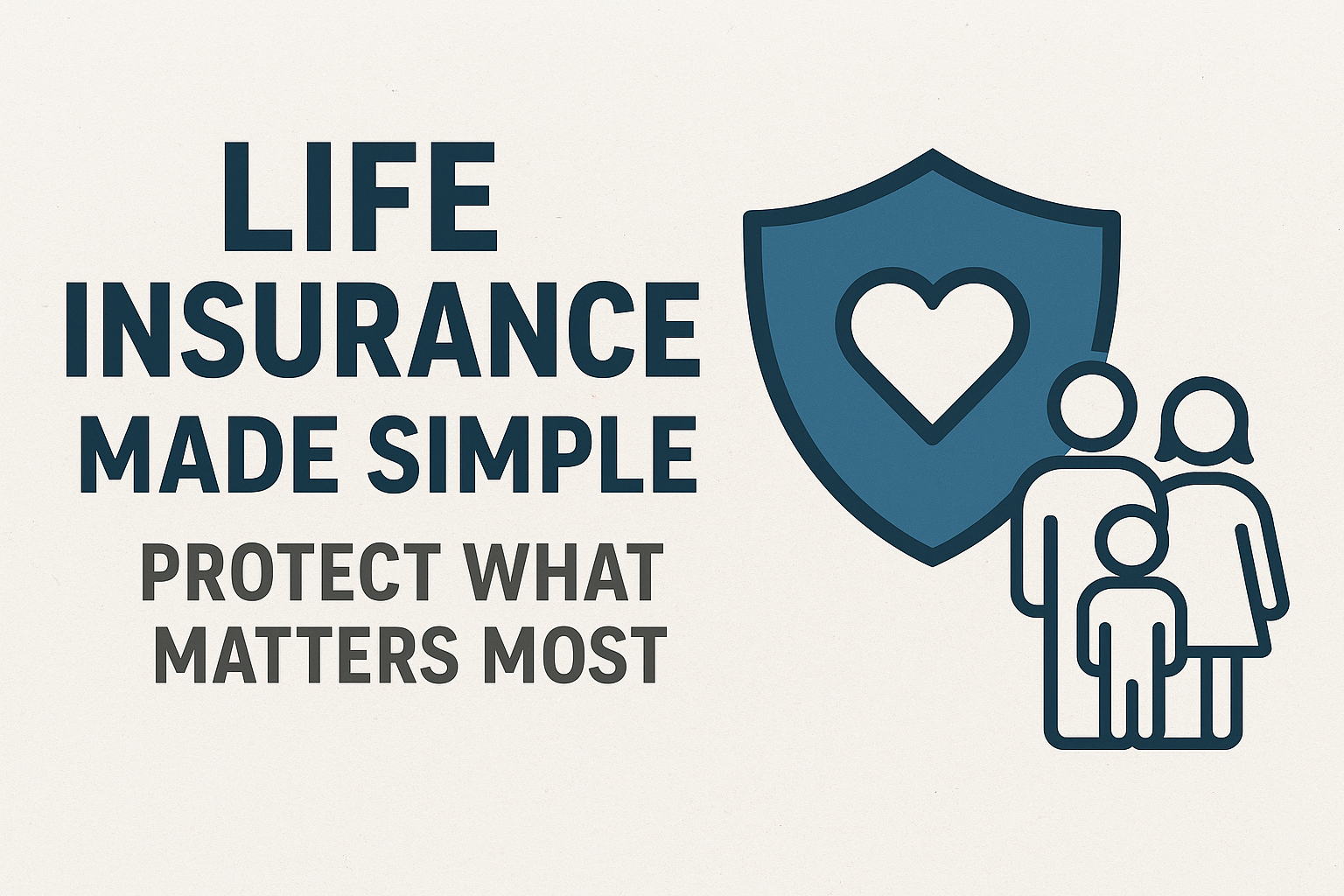Life is full of uncertainties, and while we cannot control what lies ahead, we can take proactive steps to safeguard our loved ones and protect the wealth we work so hard to build. One of the most effective tools for financial security and wealth protection is life insurance. Despite its importance, many people find life insurance confusing—filled with jargon, complex products, and difficult decisions.
This ultimate guide will break down the essentials of life insurance in simple terms, explaining how it works, why it matters, and how you can choose the right policy to protect what matters most—your family’s future, financial stability, and peace of mind.
Why Life Insurance Matters
At its core, life insurance is a financial safety net. It provides a lump sum (known as the death benefit) to your beneficiaries if something happens to you. This payout can be used for:
- Income replacement: Ensuring your family maintains their standard of living.
- Debt repayment: Covering mortgages, car loans, or credit card balances.
- Education funding: Securing tuition and college expenses for your children.
- Retirement security: Certain life insurance products provide long-term savings and investment opportunities.
- Estate planning: Helping transfer wealth efficiently with potential tax benefits.
In other words, life insurance isn’t just about death—it’s about protecting life as it is lived today and tomorrow.
The Financial Security Gap
Without life insurance, families often struggle financially after the loss of a breadwinner. Studies show that nearly 40% of households would face hardship within six months if the primary wage earner passed away. That’s why insurance is an essential pillar of personal financial planning—it closes the coverage gap between what your family needs and what they actually have.
Types of Life Insurance (Explained Simply)
When considering life insurance, you’ll often hear about different types. Let’s simplify them:
1. Term Life Insurance
- What it is: Coverage for a set period (10, 20, or 30 years).
- Best for: Families needing affordable protection during their prime working years.
- Why it’s good: Lower premiums, straightforward benefits, and ideal for income replacement.
2. Whole Life Insurance
- What it is: Lifetime coverage with a guaranteed death benefit.
- Best for: Long-term security and wealth transfer.
- Why it’s good: Builds cash value over time, which you can borrow against for emergencies, retirement, or education.
3. Universal Life Insurance
- What it is: Flexible permanent insurance with investment options.
- Best for: Those seeking insurance plus tax-advantaged growth.
- Why it’s good: Combines protection and wealth-building, supporting estate planning and retirement.
4. Variable Life Insurance
- What it is: A policy tied to investment accounts.
- Best for: Investors who want potential high returns along with life coverage.
- Why it’s good: Offers both protection and investment growth, though with higher risks.
Key Benefits of Life Insurance
Life insurance isn’t just about leaving money behind—it’s a strategic financial tool. Here are the main benefits:
- Wealth Protection and Growth: Certain policies accumulate cash value, providing a form of long-term savings that can supplement retirement or emergency funds.
- Tax Advantages: Life insurance offers tax-free death benefits and, in some cases, tax-deferred growth on accumulated cash value. This makes it an effective estate planning and wealth transfer tool.
- Peace of Mind: Knowing your family won’t struggle financially provides a sense of security. It ensures your hard work supports your family even in your absence.
- Retirement Security: Permanent life insurance policies can serve as a supplemental retirement plan, providing additional funds when traditional retirement accounts are not enough.
- Estate Planning: High-net-worth individuals use life insurance to minimize estate taxes and pass on wealth efficiently.
How Much Coverage Do You Need?
A common mistake is underestimating the required coverage. Here’s a simple way to calculate:
- Annual income x years needed = Income replacement
- Outstanding debts = Mortgages, loans, and credit cards
- Future expenses = Education, retirement, healthcare
- Final expenses = Funeral and medical costs
A good rule of thumb is 10–15 times your annual income. But always adjust based on family needs and lifestyle.
Life Insurance and Financial Planning
Integrating life insurance into your financial plan ensures holistic protection. It works hand in hand with:
- Retirement accounts (401k, IRA, pensions)
- Emergency funds
- Investments in stocks, bonds, and real estate
- Estate planning strategies
This combination creates a balanced financial portfolio that prioritizes both wealth accumulation and wealth protection.
Common Myths About Life Insurance
- “I’m young, I don’t need it.”
The younger you are, the cheaper your premiums will be. Waiting only increases costs. - “It’s too expensive.”
Term life insurance is often affordable—sometimes less than a daily coffee. - “I have coverage through work.”
Employer-provided group insurance is limited and usually doesn’t follow you if you change jobs. - “It’s just for parents.”
Even singles benefit, as life insurance can cover debts, funeral expenses, and leave a legacy.
Tips for Choosing the Right Policy
- Assess your needs—calculate debts, income replacement, and future expenses.
- Compare policy types—term vs permanent.
- Evaluate insurance companies—financial strength and claim settlement history matter.
- Work with a financial advisor—they can align policies with your broader wealth management and estate planning goals.
- Review regularly—life events like marriage, children, or home purchases may require updates.

